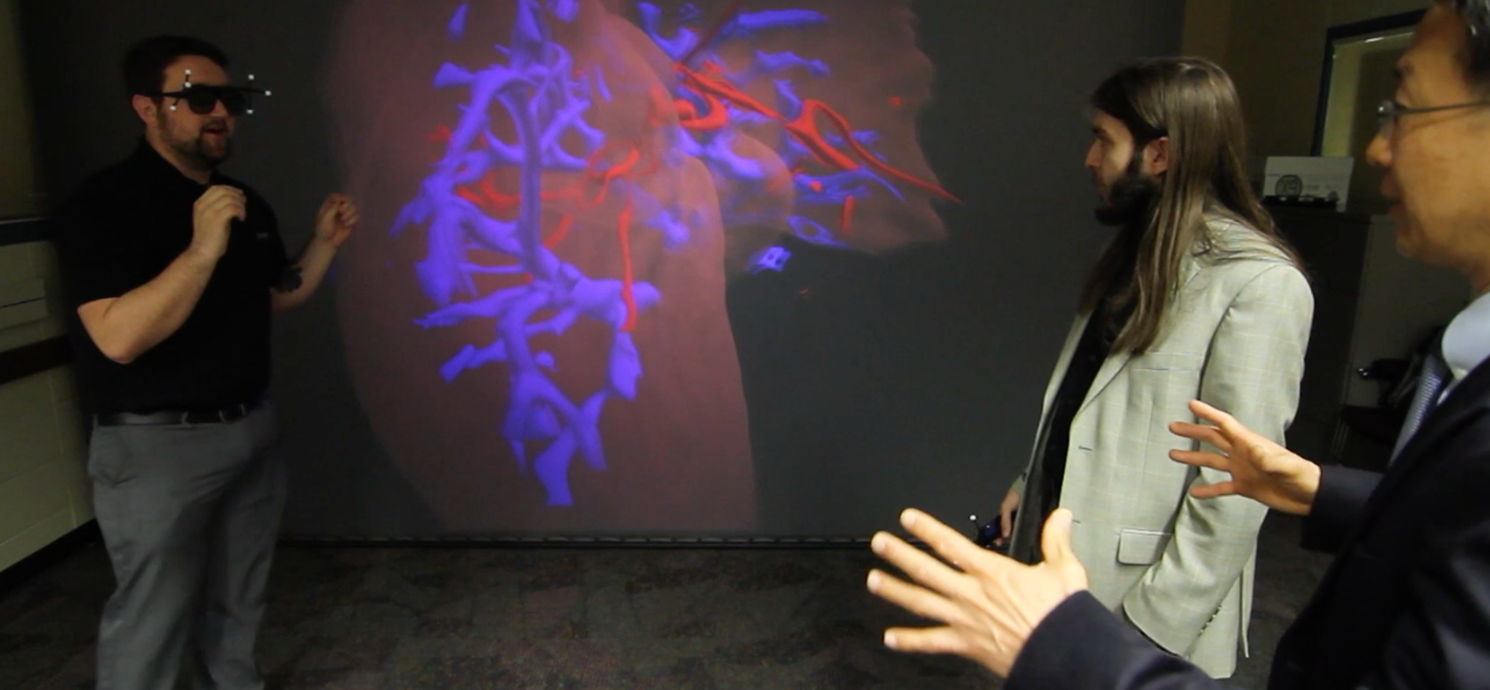
Understanding complex sets of data sometimes requires more than what numbers alone can demonstrate. To truly engage with vast and intricate amounts of data, we need to be able to visualize what it means—and in some cases, to reach out and touch it.
Purdue university Fort Wayne Professor of Computer Science Beomjin Kim’s game-changing research into information visualization and computer graphics is making that possible.
COMPUTATIONAL PERCEPTION
Kim’s research is in part focused on how to process and visualize data for analytics, consumption, and manipulation. By finding new ways to take a given set of data and render it through computer modeling and animation, Kim is helping researchers discover new ways to convert alphanumeric data across a wide variety of fields into something they can see with their own eyes.
“By presenting that kind of information to the user through visualization, the user can easily evaluate or analyze huge amounts of data.”
— Beomjin Kim
Visualization of data helps researchers parse, compartmentalize, and understand the data they are manipulating.
Kim hopes his research into the application of computer graphics and modeling in data manipulation will help fellow researchers grasp entire sets of data more easily, setting up for further breakthroughs in medical technologies, engineering, defense, gaming, and more.

DATA IN HIGH DEFINITION
Drilling down further into data visualization, Kim is also heavily invested in advancements of image quality. Everyone—from top-level researchers to end-user consumers—benefits from these advances in visual fidelity, which allow for sharper and more detailed renderings of information. The same advances in imaging quality that allow for better cameras in our smartphones and increasingly jaw-dropping graphics in computer games also create profound opportunities for industries vital to our wellbeing—including medical and surgical simulations and training.
NATIONAL RECOGNITION
Kim is also director of the Information Analytics and Visualization Center, one of PFW’s renowned Centers of Excellence. The center, which specializes in 3-D vision technology research, has received funding from the National Science Foundation in recognition of its groundbreaking work. To receive funding, Kim and his researchers used computer imaging to generate the scene of an actual battlefield in a 3-D space down to the smallest details—including complex terrains, artillery locations, and resource allocation.
By projecting that information visually, a commander would be better equipped to assess and understand the situation on the ground and in the air more quickly. The practical application of Kim’s research for defense technologies is almost limitless.
SHARING THE SPACE
But while Kim’s research has garnered a great deal of attention from investors, partners, and industry leaders, he notes that one of his favorite things about teaching and researching at PFW is his ability to involve students.
“Some of our students need more challenge beyond the classroom. They are interested in doing research.”
— Beomjin Kim
Kim finds motivation and inspiration in the eagerness of his students to get involved in his research, which can then evolve into career opportunities after graduation.